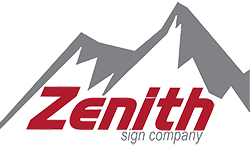 In the intricate dance of vehicles, pedestrians, and cyclists on our roads, one silent guardian stands out—the traffic control sign. These unassuming markers play a vital role in maintaining order, ensuring safety, and facilitating the smooth flow of traffic. From the humble stop sign to complex directional indicators, traffic control signs silently communicate rules and guidance, shaping the behavior of road users. Let's delve deeper into the world of traffic control signs and explore the indispensable role they play in our everyday lives.
In the intricate dance of vehicles, pedestrians, and cyclists on our roads, one silent guardian stands out—the traffic control sign. These unassuming markers play a vital role in maintaining order, ensuring safety, and facilitating the smooth flow of traffic. From the humble stop sign to complex directional indicators, traffic control signs silently communicate rules and guidance, shaping the behavior of road users. Let's delve deeper into the world of traffic control signs and explore the indispensable role they play in our everyday lives.
Safety First: At the heart of traffic control signs lies a commitment to safety. Stop signs, yield signs, and pedestrian crossing signs serve as constant reminders for drivers to exercise caution and prioritize the safety of themselves and others. By signaling potential hazards and regulating the right of way, these signs mitigate the risk of accidents and prevent collisions, safeguarding lives on the road.
Regulating Traffic Flow: Traffic control signs act as silent conductors orchestrating the movement of vehicles through intersections, roundabouts, and roadways. Speed limit signs enforce safe driving speeds, reducing the likelihood of accidents caused by excessive speed. Lane usage signs and merge signs guide drivers, preventing congestion and ensuring a seamless transition between lanes. By establishing clear rules and expectations, these signs help maintain an efficient flow of traffic, reducing delays and frustration for road users.
Navigational Aid: In an age of GPS and digital maps, it's easy to overlook the significance of traditional road signs in navigation. Yet, traffic control signs remain indispensable navigational aids, especially in areas with poor network coverage or complex road layouts. Directional signs, route markers, and destination indicators provide essential guidance, helping drivers reach their destinations safely and efficiently. Whether it's a highway exit sign or a street nameplate, these signs empower road users with crucial information, ensuring they stay on the right path.
Enhancing Accessibility: Traffic control signs also play a vital role in enhancing accessibility for all road users, including pedestrians and cyclists. Crosswalk signs, pedestrian signals, and shared pathway signs prioritize the safety and convenience of pedestrians, encouraging walking and cycling as viable modes of transportation. Accessibility signs, such as those indicating parking spaces for individuals with disabilities, promote inclusivity and ensure equitable access to transportation infrastructure.
Cultural and Legal Significance: Beyond their practical functions, traffic control signs hold cultural and legal significance, serving as symbols of authority and governance on the roads. Compliance with these signs is not merely a matter of convenience but a legal obligation enforced by traffic laws. Failure to heed stop signs, yield signs, or other regulatory signs can result in traffic violations and penalties. Thus, traffic control signs serve as tangible reminders of the social contract that governs our behavior on the roads, promoting order and civility among road users.
Conclusion: In the bustling symphony of modern transportation, traffic control signs stand as silent sentinels, guiding and regulating the flow of traffic. From ensuring safety and efficiency to providing essential navigation cues, these signs play a multifaceted role in our everyday lives. As we navigate the maze of roads and intersections, let us not overlook the significance of these humble markers and the indispensable role they play in shaping our collective journey toward safer and more accessible transportation systems.
